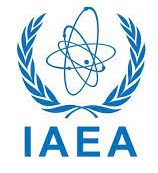Determinación de la línea base ambiental y evaluación de radiactividad en el desierto de Sechura, Perú
Palabras clave:
Fosfatos, Radiactividad natural, Dosis de radiación, Radioisótopos de desintegración beta, SechuraResumen
Situado en la parte noroccidental de Perú, el desierto de Sechura últimamente ha estado recibiendo atención internacional debido a sus reservas de roca fosfórica. Este estudio evalúa los niveles de radiactividad ambiental de la región a través de mediciones de dosis gamma y actividades de radionucleidos en la superficie del suelo y la vegetación. Las dosis obtenidas oscilaron entre 0,3 y 1,6 mSv/año y la concentración de actividad obtenidas en las muestras de suelos colectados de la zona de estudio estuvieron entre 46 y 485 Bq/kg; 4 y 48; 3 y 62 Bq/kg y entre 218 y 734 Bq/kg para los radionucleidos naturales K-40, Ra-226, U-238 y actividad beta total, respectivamente. Para el caso de las muestras de vegetación colectadas en la región el promedio de actividad fue de 92 Bq/kg de K-40 y 129 Bq/kg de actividad beta total. Los resultados obtenidos en este estudio indican que la región tiene un nivel de radiación de fondo con alta variabilidad, pero dentro de los límites naturales y no muestra riesgo significativo para el medio ambiente y el público.
Descargas
Publicado
Número
Sección
Licencia
Derechos de autor 2021 José Osores, Jorge Martínez, Jorge Yap

Esta obra está bajo una licencia internacional Creative Commons Atribución 4.0.








